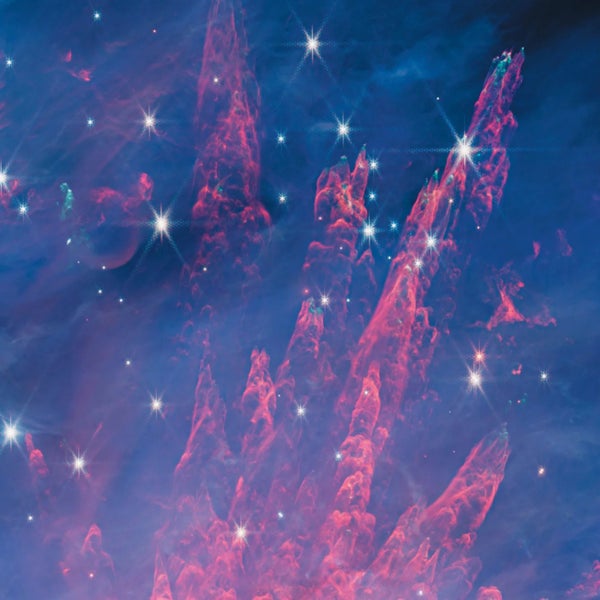Orion’s Twin Rogue Planets Inexplicably Blaze with Intense Radio Waves
Researchers don’t know how this pair of free-floating planets formed or why it radiates so brightly
Part of the Orion Nebula shown in infrared.
NASA, ESA, CSA/Science leads and image processing: M. McCaughrean, S. Pearson (CC BY-SA 3.0 IGO)
Strange, twirling duos of roughly Jupiter-size celestial bodies in the Orion Nebula have had astronomers scratching their heads since the James Webb Space Telescope (JWST) photographed them in October 2023. Unless they were violently ejected from a solar system—unlikely, given their delicate, undisturbed dance—the free-floating pairs challenge astronomers’ long-standing notion that planets can form only within a star’s orbit.
Researchers have now discovered radio-wavelength signals from one of these 42so-called Jupiter-mass binary objects (JuMBOs), according to a study in the Astrophysical Journal Letters, suggesting the pair is astoundingly bright. “It’s important to understand what these objects are, and having radio data really adds a new dimension to the problem,” says the study’s lead author, Luis F. Rodríguez, an astronomer at the National Autonomous University of Mexico.
When Rodríguez and his team heard about JWST’s discovery, they scoured public telescope data for unidentified radio-wave sources in Orion and found one that recurred three times over a decade in the exact same position as the pair known as JuMBO24. The signals suggest JuMBO24 isn’t moving quickly through the nebula, which would mean it might have indeed been born alone rather than blasted away from a star system.
On supporting science journalism
If you’re enjoying this article, consider supporting our award-winning journalism by subscribing. By purchasing a subscription you are helping to ensure the future of impactful stories about the discoveries and ideas shaping our world today.
“The Orion Nebula is just so far away that I would never…
Read the full article here







